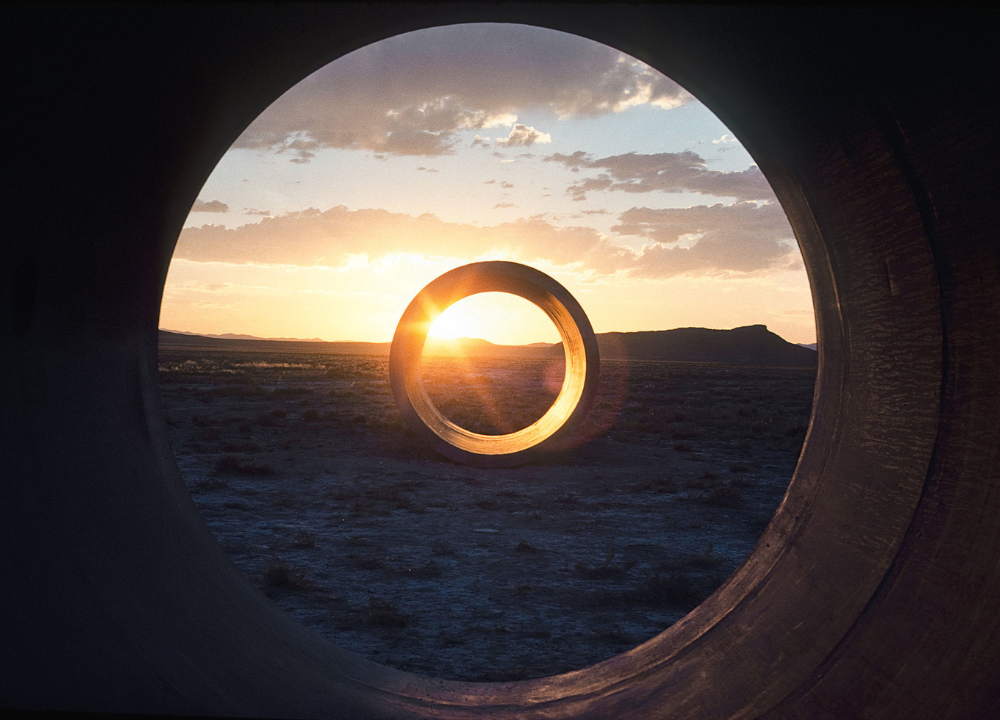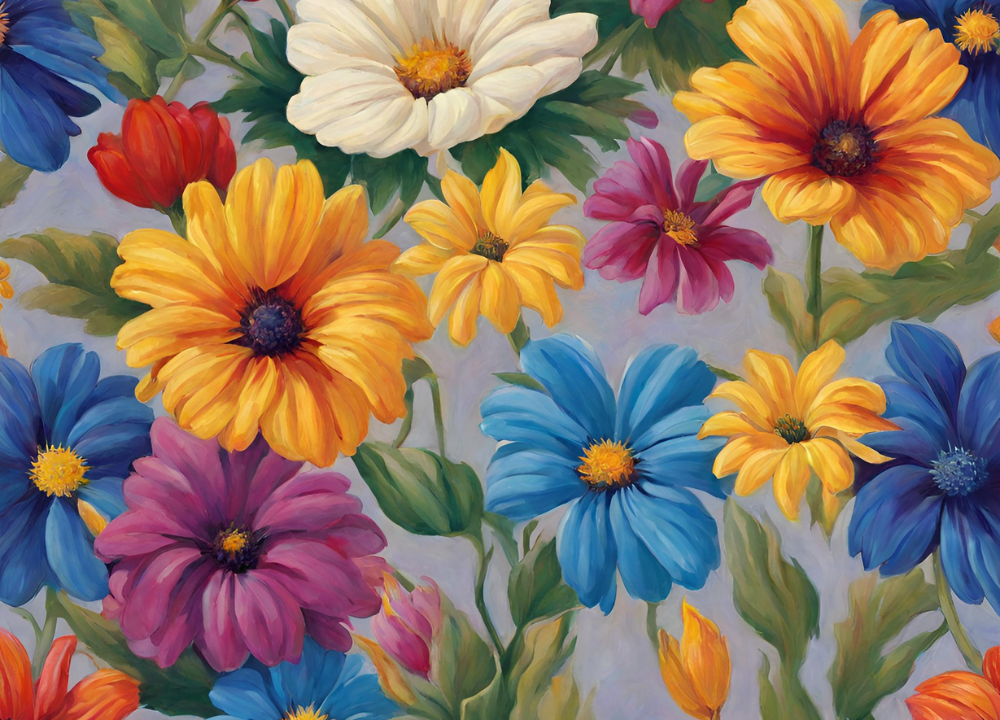To use Viridian Green for stunning landscape paintings, mix it with white for soft highlights. Combine it with earth tones for depth and richness.
Viridian Green is a vibrant pigment that can elevate your landscape paintings. Its unique hue captures the essence of nature, making it ideal for foliage, water, and sky. This pigment offers versatility, allowing artists to achieve various shades by mixing with other colors.
Using Viridian Green effectively can create a sense of harmony and balance in your artwork. Experimenting with different techniques, such as glazing or layering, can enhance its impact. Whether you are depicting a lush forest or a tranquil lake, Viridian Green can bring your landscapes to life. Embrace this color to add depth and vividness to your artistic creations.
Table of Contents
Introduction To Viridian Green
Viridian Green is a powerful color for landscape paintings. It brings life and vibrancy to your artwork. This section explores what makes Viridian Green special. Learn how to use it effectively in your paintings.
What Is Viridian Green?
Viridian Green is a bright, bluish-green pigment. It comes from the mineral chromium oxide. Artists love it for its transparency and strength. This color can create stunning effects in nature scenes.
Characteristics Of Viridian Green
- Transparency: Allows for layering and depth.
- Lightfastness: Resists fading over time.
- Mixability: Blends well with other colors.
- Versatility: Works in various painting styles.
Where To Use Viridian Green
- Forests: Ideal for lush foliage.
- Water Scenes: Perfect for reflecting water.
- Sky: Use for vibrant sunsets.
- Mountains: Adds depth to distant hills.
Mixing Viridian Green
Mixing Viridian Green with other colors can create unique shades. Here are some popular mixes:
| Mix Color | Resulting Shade |
|---|---|
| Cadmium Yellow | Fresh, bright greens |
| Ultramarine Blue | Muted, deeper greens |
| Burnt Umber | Earthy, natural tones |
Tips For Using Viridian Green
- Start with a small amount: It’s a strong color.
- Layer for depth: Use thin washes.
- Experiment: Try different mixes.
- Observe nature: Capture real-life colors.
Color Properties
Viridian Green is a beautiful color often used in landscape paintings. Its unique color properties make it a favorite among artists. Understanding these properties helps create stunning artwork. Two main aspects to explore are hue and tone and opacity and transparency. Each plays a vital role in how Viridian Green interacts with other colors and how it appears on canvas.
Hue And Tone
The hue of Viridian Green is a bright, vibrant shade. It leans slightly towards blue, giving it a cool appearance. This makes it perfect for painting lush landscapes, forests, and serene waters. The tone can vary based on mixing and application methods. Here’s how to adjust the hue and tone:
- Mix with Yellow: This creates a brighter, more vibrant green.
- Mix with Black: Darkens the shade for more dramatic effects.
- Mix with White: Lightens the hue, creating softer tones.
Check out the table below for a quick reference on hue adjustments:
| Mixing Color | Resulting Tone |
|---|---|
| Yellow | Bright Viridian |
| Black | Dark Viridian |
| White | Pastel Viridian |
Experimenting with different hues and tones can lead to breathtaking landscapes. Each choice affects the overall mood of the painting.
Opacity And Transparency
Viridian Green has unique opacity and transparency qualities. Its opacity is medium, which means it can cover other colors well. This is useful for creating depth and layering in your artwork. The transparency adds versatility. Here’s how to use these properties:
- Layering: Apply multiple thin layers for depth.
- Glazing: Use a transparent layer over dry paint for a luminous effect.
- Mix with Water: This can increase transparency, perfect for washes.
Check the table for opacity and transparency effects:
| Technique | Effect |
|---|---|
| Thick Application | Opaque Coverage |
| Thin Wash | Translucent Layer |
| Glazing | Enhanced Color Depth |
Understanding opacity and transparency allows for more creative freedom. It helps in achieving the desired effects in your landscape paintings.

Mixing Techniques
Mixing techniques are essential for using Viridian Green effectively in landscape paintings. This vibrant color offers endless possibilities. Understanding how to mix it can enhance your artwork. You can create stunning effects and achieve depth in your paintings. Mastering these techniques will elevate your skills as an artist.
Complementary Colors
Viridian Green is a cool color. To make it stand out, use complementary colors. The opposite of green on the color wheel is red. Using red can create vibrant contrasts in your artwork.
Here are some tips for using complementary colors:
- Mix Viridian Green with a touch of red to create depth.
- Use warm colors alongside cool colors for balance.
- Experiment with different shades for unique effects.
Here’s a simple table showing complementary colors for Viridian Green:
| Color | Effect |
|---|---|
| Red | Creates a striking contrast. |
| Orange | Warmth and vibrancy. |
| Yellow | Brightens the painting. |
Using these complementary colors will enhance your landscape paintings. They bring out the beauty of Viridian Green and create stunning visuals.
Creating Shades
Creating shades from Viridian Green adds depth to your landscape paintings. Mixing it with black or darker hues can create darker shades. This technique provides a three-dimensional feel to your artwork.
Follow these steps to create beautiful shades:
- Start with a base of Viridian Green.
- Add a small amount of black paint.
- Mix thoroughly for a smooth blend.
- Test the shade on a separate paper.
Here are tips for creating various shades:
- Mix with blue for a cooler shade.
- Add white for a lighter tint.
- Combine with yellow for a vibrant green.
Experiment with these combinations. Each shade will tell a different story in your painting.
Application Methods
Using Viridian Green can elevate your landscape paintings. This rich, vibrant color adds depth and life to nature scenes. Understanding the right application methods is key. Mastering these techniques will enhance your artwork.
Brush Techniques
Brush techniques allow you to create different textures and effects. Here are some effective methods:
- Dry Brushing: Use a dry brush to create a soft, textured look. This technique works well for grassy areas.
- Glazing: Mix Viridian Green with a medium for a transparent layer. This adds depth without overpowering other colors.
- Layering: Apply multiple layers of Viridian Green. Start with a light base and gradually add darker shades.
- Wet-on-Wet: Use wet paint on wet surfaces for a smooth blend. This creates a soft gradient effect.
Here’s a quick table summarizing these techniques:
| Technique | Effect |
|---|---|
| Dry Brushing | Textured look |
| Glazing | Depth and transparency |
| Layering | Rich color variations |
| Wet-on-Wet | Soft blends |
Experiment with these techniques. Each method brings out unique characteristics in your landscape paintings.
Palette Knife Use
The palette knife offers a different approach to using Viridian Green. This tool creates sharp edges and bold textures.
Here are some effective ways to use a palette knife:
- Impressionistic Strokes: Use the knife to apply paint in thick strokes. This creates a lively, dynamic surface.
- Scraping: Scrape off paint for a textured effect. This can reveal underlying colors and add depth.
- Mixing: Blend Viridian Green with other colors directly on the canvas. This creates exciting new shades.
- Building Layers: Apply layers of paint with the knife. This adds dimension to your landscape.
Here’s a quick overview of palette knife techniques:
| Technique | Effect |
|---|---|
| Impressionistic Strokes | Dynamic texture |
| Scraping | Revealed depth |
| Mixing | New shades |
| Building Layers | Added dimension |
Using a palette knife offers a bold approach. It can transform your landscapes into stunning pieces of art.
Layering For Depth
Viridian Green is a vibrant color perfect for landscape paintings. It adds life and depth to your artwork. Layering for depth enhances the visual appeal of your landscapes. This technique helps create a sense of space and realism. Using multiple layers makes your paintings stand out. Here’s how to master layering with Viridian Green.
Underpainting Strategies
Underpainting is the first step in creating depth. It sets the groundwork for your landscape. Start with a neutral color or a dark shade to create shadows. This will help your Viridian Green pop. Here are some effective underpainting strategies:
- Choose a complementary color: Use colors like burnt sienna or ochre. They create a strong contrast.
- Apply a wash: Dilute Viridian Green with water or a medium. This creates a soft base.
- Use a palette knife: Scrape or spread paint for texture. This adds interest.
Here’s a simple table for quick reference:
| Underpainting Method | Description |
|---|---|
| Complementary Color | Creates contrast for depth. |
| Wash Technique | Softens colors and adds layers. |
| Palette Knife | Adds texture and interest. |
Experiment with different techniques. Each method brings unique depth to your artwork. Remember, the goal is to build a strong foundation.
Top Layer Enhancements
The top layer is where the magic happens. This is where Viridian Green shines. Use it to highlight areas of your landscape. Here are some tips for enhancing your top layers:
- Mix with whites: Create lighter shades. This adds highlights to foliage and water.
- Use glazing: Thin layers of paint can create luminosity. This technique makes colors more vibrant.
- Incorporate textures: Use brushes or sponges. This adds depth and realism.
Consider these enhancements:
| Enhancement Technique | Purpose |
|---|---|
| Mix with Whites | Adds highlights and brightness. |
| Glazing | Increases color richness. |
| Texturing Tools | Creates depth and movement. |
Experiment with these top layer techniques. They will elevate your landscapes. Using Viridian Green creatively transforms simple scenes into stunning pieces of art.
Landscape Composition Tips
Using Viridian Green in landscape paintings can create beautiful, vibrant scenes. To make your artwork shine, focus on strong composition. Good composition grabs attention and guides the viewer’s eye. This section offers helpful tips for using Viridian Green effectively in your landscape art.
Focal Points
A strong focal point makes your landscape painting stand out. It draws the viewer’s eye and creates interest. Here are some tips for establishing focal points:
- Choose a Subject: This could be a tree, a mountain, or a building.
- Use Contrast: Place bright colors, like Viridian Green, against darker shades.
- Size Matters: Larger elements will attract more attention.
- Detail Focus: Add more detail to your focal point than to the background.
You can create a table to see examples of focal points:
| Subject | Color Contrast | Size | Detail Level |
|---|---|---|---|
| Tree | Bright Viridian Green | Large | High |
| Mountain | Dark Gray | Medium | Medium |
| Building | Bright Yellow | Small | High |
With these tips, your focal points will become clear and captivating.
Rule Of Thirds
The Rule of Thirds helps create balance in your paintings. Imagine your canvas divided into nine equal squares. Place important elements along these lines or at their intersections.
Follow these steps to apply the Rule of Thirds:
- Divide Your Canvas: Use two horizontal and two vertical lines.
- Position Key Elements: Place trees, mountains, or other features along these lines.
- Balance the Scene: Make sure to distribute elements evenly.
- Use Viridian Green: Apply this color in focal areas to grab attention.
Here’s a simple example:
- Top Left: A bright sky with clouds.
- Center Right: A large tree painted in Viridian Green.
- Bottom Left: A winding river.
This technique guides the viewer’s eye through the painting, making it more engaging.
Common Mistakes
Using Viridian Green in landscape paintings can create stunning effects. However, many artists make common mistakes. These errors can diminish the beauty of the artwork. Recognizing these mistakes can enhance your painting skills. Below are two significant mistakes to avoid.
Overuse Of Color
Using too much Viridian Green can overwhelm your landscape. This vibrant hue is beautiful but should be used wisely. Here are some reasons why overusing this color is a mistake:
- It can create a jarring effect.
- It may distract from other important elements.
- Over-saturation can lead to visual fatigue.
To avoid overuse:
- Mix Viridian Green with neutral colors.
- Limit it to focal areas.
- Use it sparingly in shadows.
Consider this table for a balanced approach:
| Color Usage | Effect |
|---|---|
| 50% Viridian Green | Vibrant but balanced |
| 25% Viridian Green | Subtle and calming |
| 75% Viridian Green | Overwhelming and harsh |
Keep the use of Viridian Green intentional. This will enhance your landscape paintings.
Neglecting Composition
Composition is key in landscape painting. Ignoring it can lead to chaotic artwork. A strong composition guides the viewer’s eye. Here are common mistakes related to composition:
- Placing the horizon line too high or too low.
- Failing to use the rule of thirds.
- Ignoring foreground, middle ground, and background.
To improve your composition:
- Sketch a rough layout before painting.
- Use Viridian Green to create depth.
- Balance large areas of color with smaller details.
Consider these tips:
- Use leading lines to draw attention.
- Vary the size of objects for interest.
- Use contrasting colors to highlight focal points.
Prioritize composition. It makes your use of Viridian Green more effective in landscape paintings.
Conclusion
Viridian green can transform your landscape paintings into vibrant masterpieces. Its versatility adds depth and richness to your artwork. Experiment with mixing and layering to discover unique shades. Embrace this color’s beauty, and let it inspire your creativity. With practice, your landscapes will captivate and resonate with viewers.




